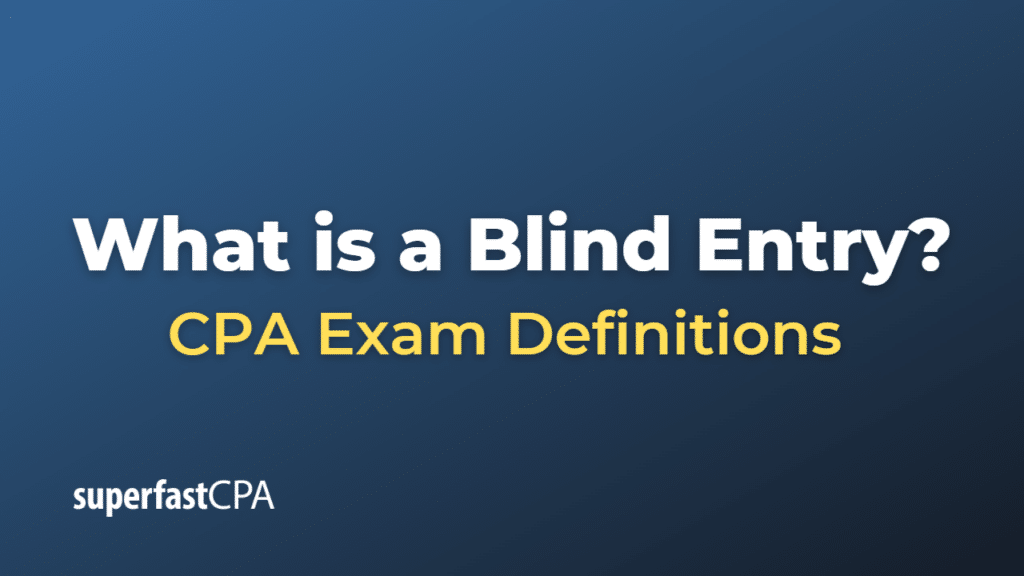Blind Entry
In accounting, the term “blind entry” is not a standard or widely recognized term. However, it could be interpreted as an entry made without adequate information, proper authorization, or sufficient documentation. Blind entries in accounting can lead to inaccuracies, inconsistencies, and even fraudulent activities if not addressed promptly. It is crucial to maintain accurate and well-documented financial records in any business to ensure proper financial management, accountability, and transparency.
To avoid blind entries and ensure the accuracy of financial records, businesses should implement proper internal controls and accounting practices. Some best practices include:
- Segregation of duties: Divide responsibilities among different employees to prevent a single individual from having control over an entire financial process. This reduces the risk of errors and fraudulent activities.
- Authorization and approval: Establish clear guidelines for authorization and approval levels, ensuring that financial transactions are reviewed and approved by the appropriate personnel before being recorded in the accounting system.
- Documentation and record-keeping: Maintain thorough and accurate documentation of financial transactions, including invoices, receipts, and other supporting documents, to provide a clear audit trail and reduce the risk of blind entries.
- Regular reconciliation: Periodically reconcile financial records, such as bank statements, accounts receivable, and accounts payable, to ensure accuracy and identify any discrepancies or errors in the accounting system.
- Employee training and oversight: Provide proper training to employees involved in accounting and financial processes and implement a system of oversight to ensure that accounting procedures are followed consistently and accurately.
By following these best practices, businesses can minimize the risk of blind entries and maintain accurate, consistent, and reliable financial records.
Example of a Blind Entry
Let’s consider a hypothetical example of a blind entry and the potential consequences it may have on a small business.
Suppose that Sally, an employee in the accounting department of a small retail business, is responsible for recording sales transactions and processing customer payments. Due to a hectic work schedule and lack of proper oversight, Sally accidentally records a payment from a customer without verifying the payment details or obtaining proper documentation.
Sally enters a $500 payment in the accounting system but does not have the corresponding invoice or receipt to support the transaction. This blind entry creates discrepancies in the company’s financial records, as the payment is not tied to a specific sale or customer account.
As a result of this blind entry, the following issues may arise:
- Inaccurate financial reporting: The company’s financial reports may reflect incorrect revenue figures, leading to potential misstatements of the company’s financial position and performance.
- Inability to track customer accounts: Without proper documentation, it becomes difficult to identify which customer’s account should be credited with the payment, leading to potential errors in customer account balances.
- Audit complications: During an audit, the lack of supporting documentation for the $500 payment may raise red flags, leading to additional scrutiny and potential penalties for non-compliance with accounting standards.
- Fraud risk: The lack of proper authorization and documentation for financial transactions may create opportunities for fraudulent activities, as it becomes easier for employees to manipulate financial records without detection.
To prevent such issues, the small retail business should implement proper internal controls, such as segregation of duties, authorization and approval procedures, and thorough documentation and record-keeping practices. Regular reconciliation and employee training can also help ensure that financial transactions are recorded accurately and consistently, reducing the risk of blind entries and their potential consequences.













